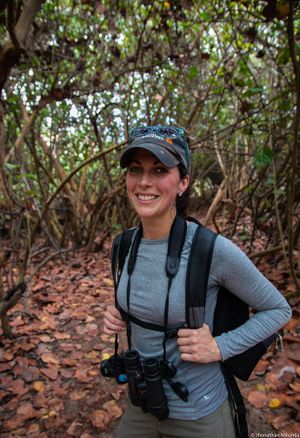NATIONAL ZOO AND CONSERVATION BIOLOGY INSTITUTE
Purple Martin ‘Landlords’ Manage a Different Kind of Tenant
Every year, bird enthusiasts hang groups of plastic gourds for purple martins to nest in

Look up during the summer in eastern or southeastern North America, and you may spot a purple martin swooping and gliding around your neighborhood. Purple martins, North America’s largest swallows, are aerial acrobats. They can snatch insects – like dragonflies, beetles, flies, moths, wasps and cicadas — right out of the air. They even drink water in flight, skimming the water’s surface with their lower bills. But what is most interesting about these swallows is where they nest.
Purple martins are social cavity nesters, meaning they build nests in sheltered holes and prefer to nest in groups. Most cavity-nesting birds seek out holes in dead trees or single nest boxes. That’s true for purple martins in the west, where the birds are more difficult to find. But in the eastern part of North America, purple martins rarely use natural nest cavities. Instead, they rely on artificial “condominiums” and groups of plastic gourds hung by bird enthusiasts.
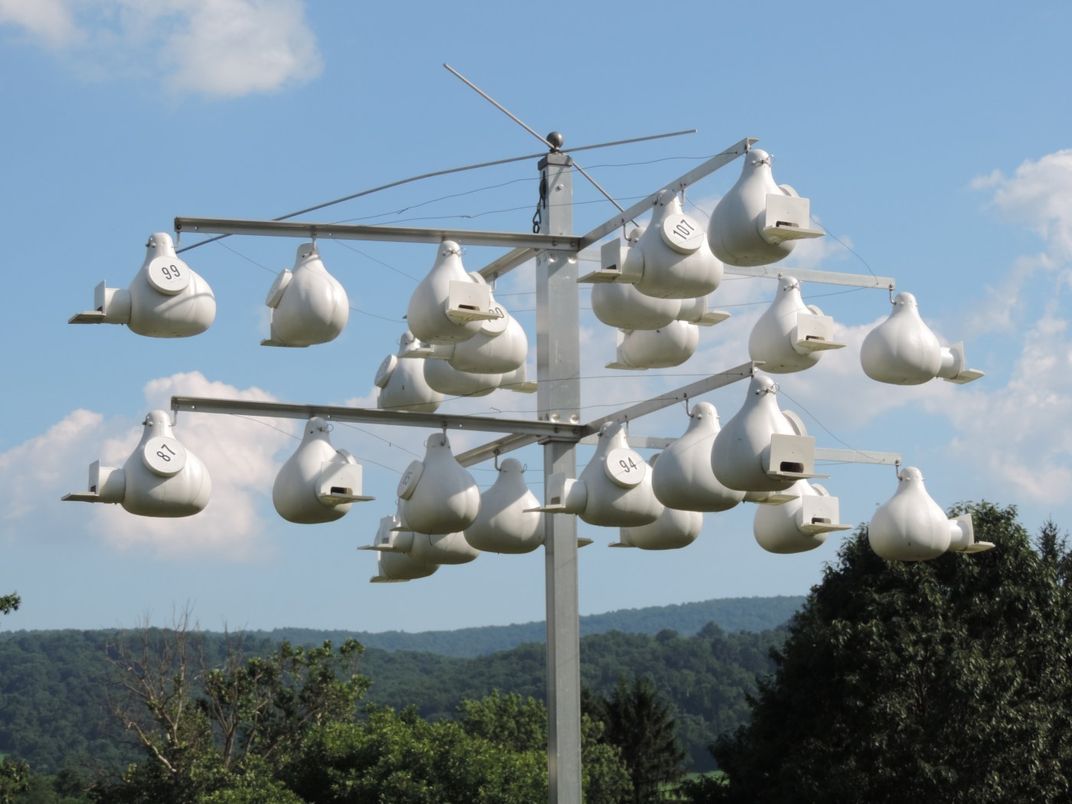
Each year, purple martin “landlords” anxiously await the loud, throaty chirps and rattle songs of purple martins (Progne subis). That includes our bird team here at the Smithsonian Conservation Biology Institute in Front Royal, Virginia. It means the birds have returned from their South American wintering grounds!
Purple martins are important native birds that help control insect populations by eating bugs. They have experienced a steady decline over the last several decades due to the widespread use of pesticides and competition from invasive species. But dedicated purple martin landlords have likely slowed the rate of this decline by helping the birds thrive during the breeding season.
Martins make their way to Virginia in mid-March and start nesting in May. In preparation for their arrival, we clean plastic nest gourds and hang them on metal nesting tree racks. We also set up predator safeguards to deter raptors and snakes. The first birds to arrive are often called “scouts.” Contrary to popular belief, they are not sent ahead to scout nesting sites on behalf of their group. Scouts are simply older birds returning to the places where they successfully nested before.
This year, our first scout (a lone adult male) arrived March 25. Over the next few weeks, 180-200 more birds moved into the colony at the center of our campus. The colony has 108 nest cavities and was first erected in the 1980s by Smithsonian biologist Gene Morton, who led many research projects on martins over the years.
In 2018, we set up a second purple martin tower with 24 more nest cavities. This smaller colony is about 2 miles east of the first, in an area of SCBI that houses rare and endangered ungulates (hoofed animals), like Persian onagers and Eld’s deer. It can take anywhere from a few days to a couple of years to attract martins to new housing, and no birds moved in for the first few years.
Hoping to attract them this year, we added a “dummy” bird (a plastic bird that looks like a purple martin) and played recordings of purple martin calls. Purple martins prefer to nest together, so the dummy bird and songs entice young martins flying by to stop in and investigate the housing. On April 21, we finally had our first arrival. A few more young martins soon followed. We hope these 12 birds will return next year — and bring some friends along with them!
We monitor our purple martins from their arrival in March through the end of August. We check all 132 nest cavities once a week to record signs of nests, the number of eggs laid and how many chicks hatched. Martins can have up to seven eggs in a clutch, laying one egg every 24 hours. The chicks hatch after about 15 days, and both parents feed them for four to five weeks until they fledge (leave the nest).
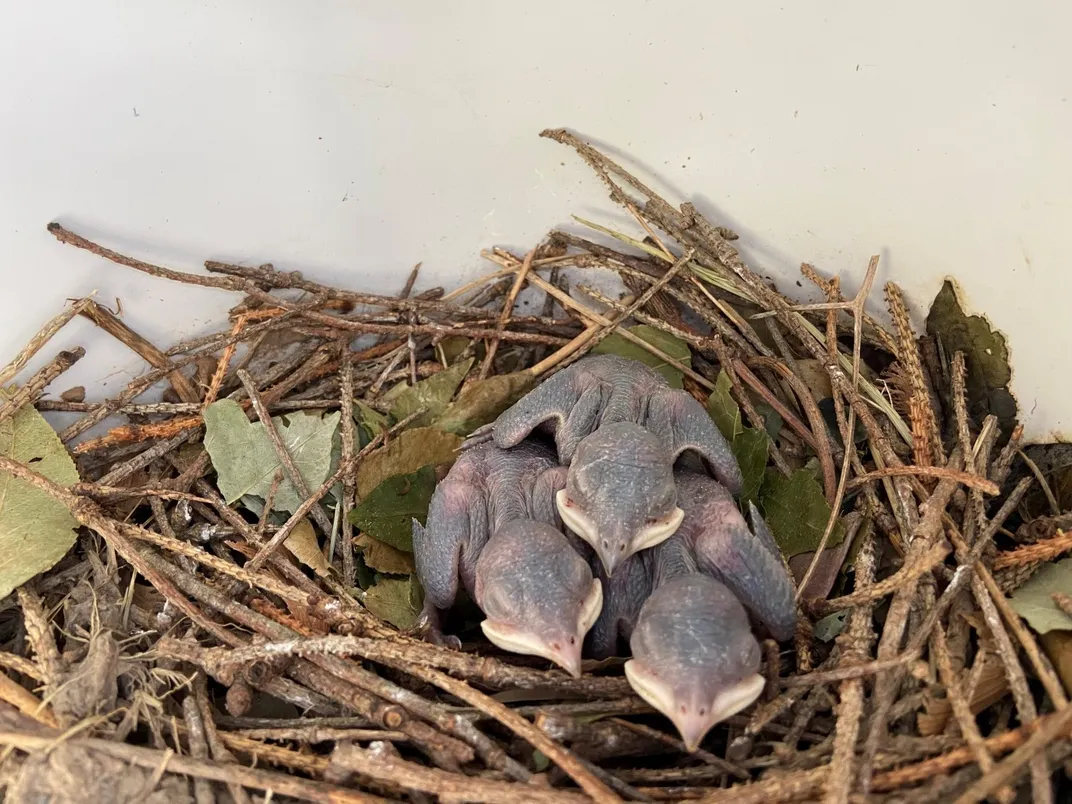
We also use bird banding to learn more about our colony. Bird banding is the process of attaching aluminum or colored bands to a bird’s legs, which allows us to track individuals over time. We have banded more than 1,000 purple martin chicks in the last decade!
When checking nests, we keep an eye out for any problems. Martins use leaves, sticks, grasses and mud to build their nests. Most include one finishing touch: a nest cup made of green leaves. We sometimes find that a house sparrow or European starling has moved into a nest gourd. House sparrows and European starlings are invasive species that will outcompete purple martins for nests and take over a colony. They will even break eggs and kill native birds and chicks, so we remove their nests when we find them.
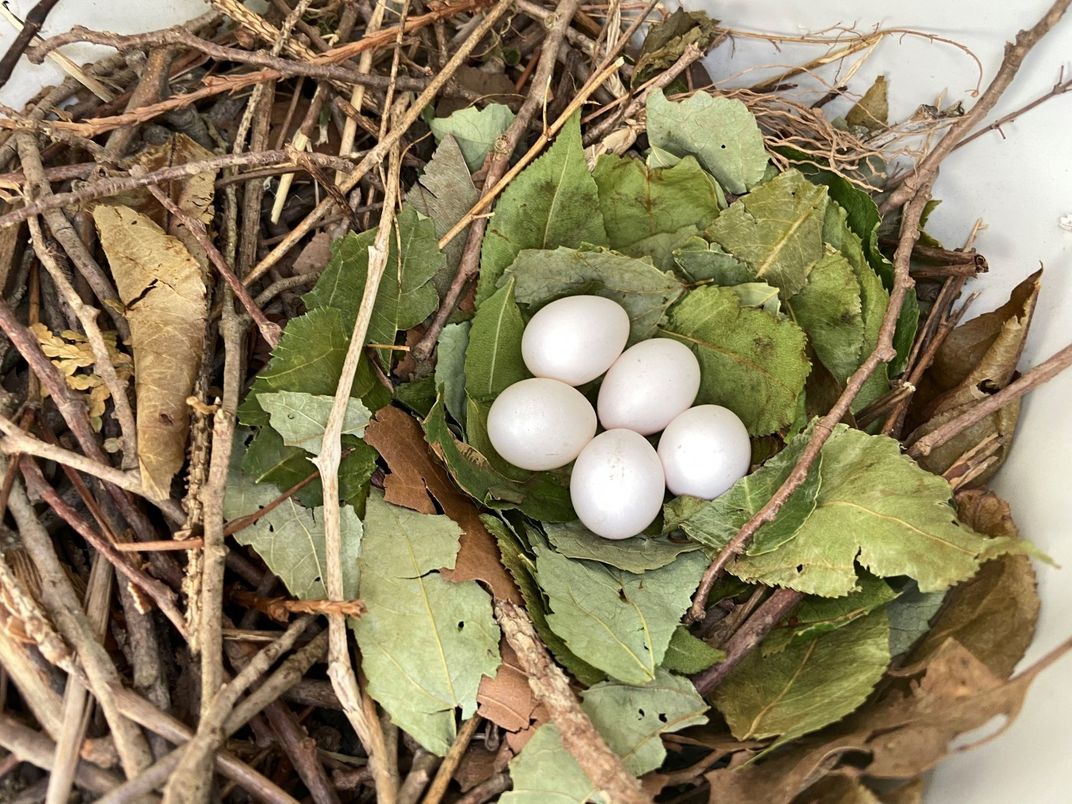
Parasites, such as mites, are also a common issue. While not interested in humans, mites will feed on nestlings. Too many mites can kill young birds. They can also cause adults to stop bringing food to the nest, leading birds to leave the nest too early. If we find a nest with mites, we quickly prepare a clean plastic gourd with soft pine bedding and pine straw. We discard the wet, dirty nest full of mites and carefully transfer the chicks to the new clean, dry nest.
Without this kind of help, purple martin colonies can begin to decline. The Purple Martin Conservation Association found that less than 45% of nestlings in parasite-infested nests survived to fledgling age. Fortunately, martins are incredibly comfortable around people. In fact, we often have quite the audience watching while we quickly and carefully lower and check the nests. The adults wait patiently on adjacent nest trees with mouths full of dragonflies and cicadas, chirping away. The minute we send the nests back up the pole, they fly in to feed the hungry chicks waiting inside!
Purple martins have been dependent on artificial housing for centuries, but researchers don’t know exactly when they came to rely on human-made structures for their nesting colonies. Purple martins on the West Coast still nest in natural cavities, adding to the mystery. People have been hanging empty gourds to attract the birds for insect control for many decades. And when a predator is nearby, martins join together to alarm call, which made them beneficial to farmers raising animals. (We can hear the purple martins from across SCBI’s campus when a Cooper’s hawk flies too near the colony). Over time, as humans have changed the landscape, many of the natural shelters that martins would have used have also disappeared.
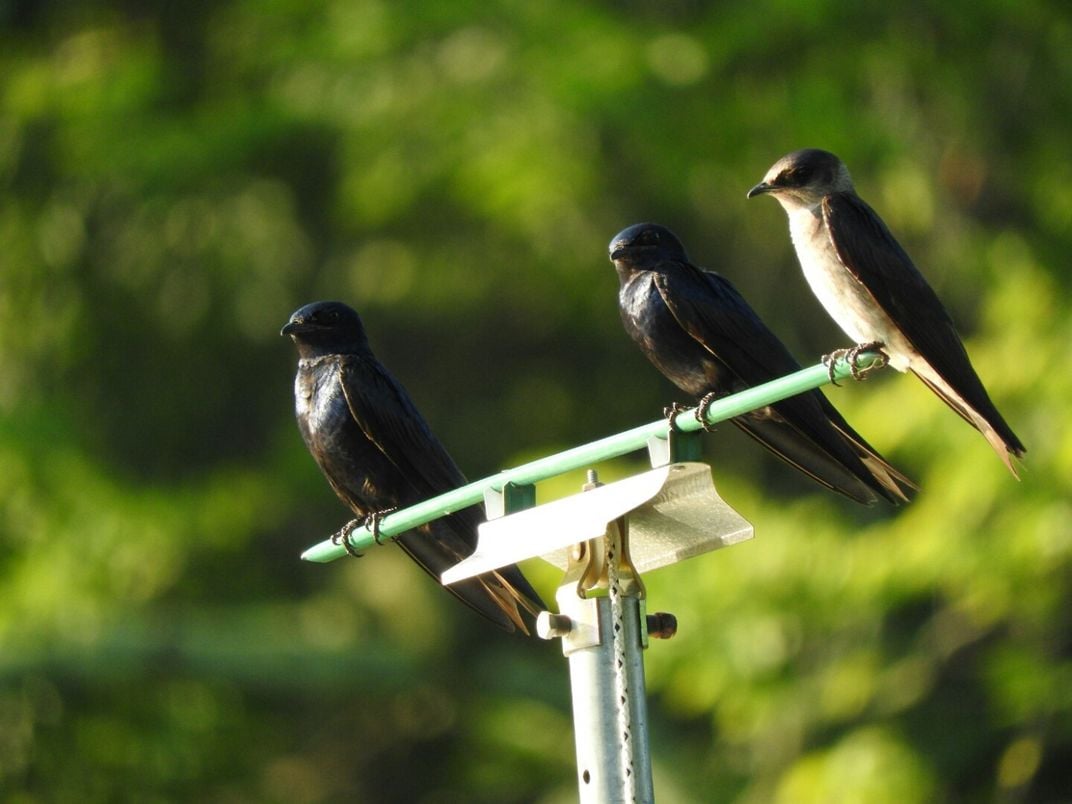
This year, our purple martins laid 383 eggs at our main colony and another 20 at our smaller colony. Not every egg is fertile, and some eggs don’t develop if temperatures drop suddenly during cold snaps in early spring. Inexperienced parents will also sometimes abandon their nests. In total, we had 246 eggs hatch and 239 chicks fledge!
We share our nest data with the Purple Martin Conservation Association each year, as part of a community science project that tracks nest success and population trends over time. In fact, anyone with a purple martin colony on their property can contribute to this research project! At the end of the season, our purple martins join Virginia’s other colonies at roosting sites, where they gather by the thousands before making the trip back to South America for the winter.
To see if your backyard might be a great purple martin habitat, visit purplemartin.org.




